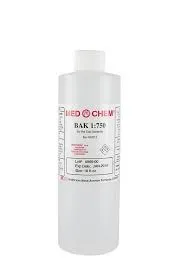flocculant vs coagulant
Flocculant vs Coagulant Understanding the Differences and Applications in Water Treatment
Water treatment is a critical process aimed at making water safe for drinking, recreational activities, and industrial use. To achieve effective water purification, several chemical agents are employed, notably flocculants and coagulants. Despite their interconnected roles, flocculants and coagulants serve different purposes in the treatment process. Understanding the distinctions between these two agents can significantly enhance the efficiency of water treatment systems.
Coagulants The First Step in Water Treatment
Coagulants are chemical substances that facilitate the aggregation of fine particulates in water. They work by neutralizing the electrostatic charges of suspended particles, which often repel each other due to their similar charges. This neutralization allows the particles to come together and form larger aggregates, known as flocs. Common coagulants include aluminum sulfate (alum), ferric sulfate, and polyaluminum chloride.
The coagulation process typically involves the addition of coagulants to water followed by rapid mixing. This ensures that the coagulant is evenly dispersed throughout the water, promoting efficient charge neutralization. As a result, small particles form larger aggregates that can be removed more easily in the subsequent treatment steps.
The importance of coagulants cannot be overstated. They are highly effective in treating turbid water populated with pathogens, organic matter, and other impurities. The coagulation process is essential for reducing the turbidity levels in water, making it visually clearer and less harmful to human health.
Flocculants Enhancing Sedimentation and Filtration
While coagulants initiate the aggregation process, flocculants play a crucial role in enhancing the settling and removal of these aggregates. Flocculants are typically high molecular weight polymers that promote the agglomeration of smaller particulates into larger, heavier flocs. This action improves the sedimentation rate and facilitates easier separation of solids from the treated water.
flocculant vs coagulant

The addition of flocculants generally follows the coagulation step. After the formation of flocs, gentle mixing is employed to encourage the further agglomeration of these aggregates. The result is dense flocs that settle quickly in sedimentation tanks or can be easily filtered using various techniques.
Flocculants are particularly beneficial in systems where enhanced sedimentation is crucial, such as in municipal wastewater treatment plants and industrial applications. By improving the settling characteristics of flocs, flocculants contribute to more effective solid-liquid separation processes, ultimately leading to cleaner effluent.
Comparative Analysis of Coagulants and Flocculants
While both coagulants and flocculants play essential roles in water treatment, they are distinct in their functionalities. Coagulants primarily focus on neutralizing particle charges and promoting initial floc formation. In contrast, flocculants enhance the stability and size of the flocs, ensuring efficient removal through sedimentation and filtration.
In terms of application, the choice between a coagulant and a flocculant largely depends on the specific characteristics of the water being treated. For example, highly turbid waters may require higher doses of coagulant to initiate effective coagulation, followed by the addition of flocculants to optimize floc settling. Conversely, in scenarios where minimal turbidity exists but a rapid sedimentation process is desired, flocculants can be employed more independently.
Conclusion
In summary, both flocculants and coagulants are indispensable in water treatment processes, yet they serve different functions. Coagulants initiate the removal of suspended particles by neutralizing their charges, while flocculants enhance the settling of larger aggregates formed during coagulation. Understanding their unique properties and how they complement each other can lead to more efficient and effective water treatment systems. As water quality becomes increasingly crucial for public health and environmental sustainability, the roles of coagulants and flocculants will continue to evolve, driving innovations in water treatment technologies.
-
Premium Isothiazolinones | Broad-Spectrum Biocidal SolutionsNewsAug.28,2025
-
LK-319 Special Scale And Corrosion Inhibitor For Steel Plants: Advanced Solutions for Industrial Water SystemsNewsAug.22,2025
-
Flocculant Water Treatment: Essential Chemical Solutions for Purification ProcessesNewsAug.22,2025
-
Isothiazolinones: Versatile Microbial Control Agents for Industrial and Consumer ApplicationsNewsAug.22,2025
-
Scale Inhibitor: Key Solutions for Water System Scale PreventionNewsAug.22,2025
-
Organophosphonates: Versatile Scale Inhibitors for Industrial Water SystemsNewsAug.22,2025





